From misty mountain trails to sacred temple settings, the waterfalls in Japan create a captivating lens into the natural beauty the island possesses. Whether you are an adventurous outdoor person or a calm nature seeker, these waterfalls fascinate you with their scenic beauty and tranquil setting. The ever-changing colours and personalities of these wonders keep varying all year round. All the waterfalls in Japan are not only a display of nature’s artwork but a testimony to the deep cultural relations the country holds with its landscapes.
10 Waterfalls In Japan You Must Visit
This list of 10 waterfalls in Japan includes mystical forest cascades to towering mountain falls, promising unforgettable views and peaceful escapes.
1. Nachi Falls, Wakayama
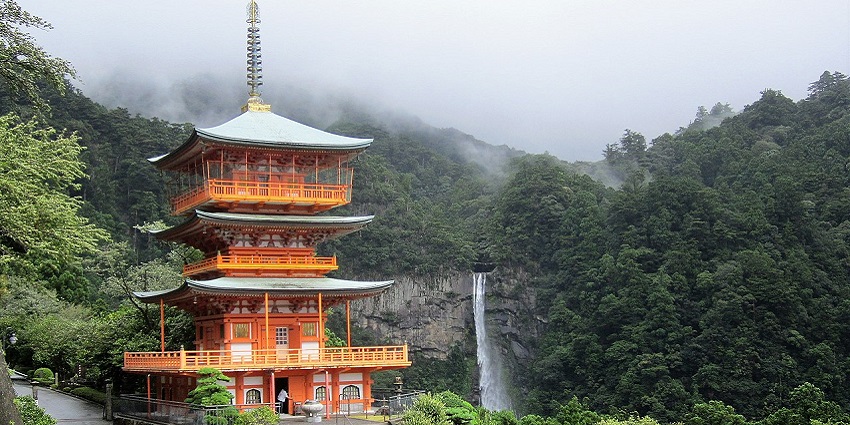
Photo: Suikotei / Wikimedia Commons
Nachi Falls, situated at the very heart of Wakayama Prefecture, ranks among the tallest and most famous waterfalls in Japan. The lush greenery surrounding the falls creates a serene atmosphere, as does its centrepiece, the Kumano Nachi Taisha, a UNESCO World Heritage Site and one of the three Grand Shrines of Kumano. These sacred falls have been the object of divine worship for centuries. A scenic three-tiered pagoda nearby contributes to the overwhelming beauty. The path that leads to the falls is lined with ancient cedar trees, creating beautiful scenery along the peaceful trail.
Best Time To Visit: April to June for lush greenery; Autumn for vibrant colours
Major Attractions: Seiganto-ji Temple, Kumano Kodo pilgrimage trail
2. Kegon Falls, Tochigi
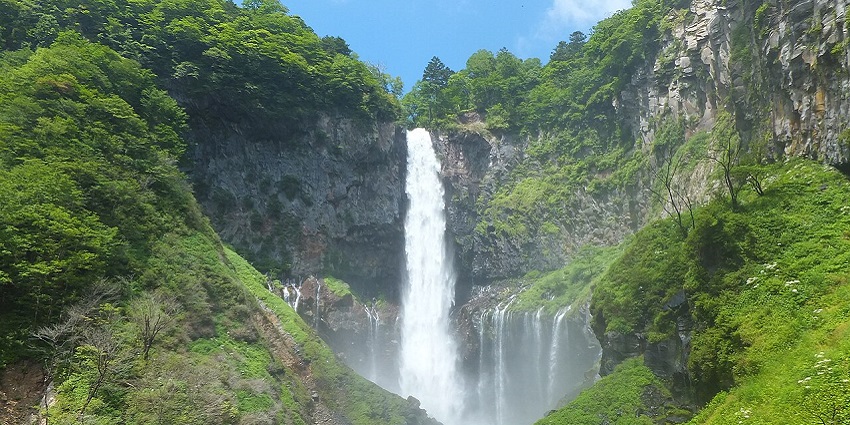
Photo: Orbixx / Wikimedia Commons
Kegon Falls is one of the popular waterfalls in Japan, located at Lake Chuzenji within Nikko National Park in Tochigi Prefecture. This spectacle of a waterfall cascades from cliffs embraced by lush greenery in summer. Conjured by the Daiya River flowing from Lake Chuzenji, Kegon Falls witnesses profound beauty in the winter days. This elevator takes guests into a lower observation deck where they are embraced by the roaring waters. The main observation area is easily accessible and has sweeping views of the falls.
Best Time To Visit: October to November for the autumn foliage
Entry Fee: Viewing platform- ¥300 (₹165)
Major Attractions: Lake Chuzenji, Akechidaira Ropeway, Nikko shrines
3. Fukuroda Falls, Ibaraki
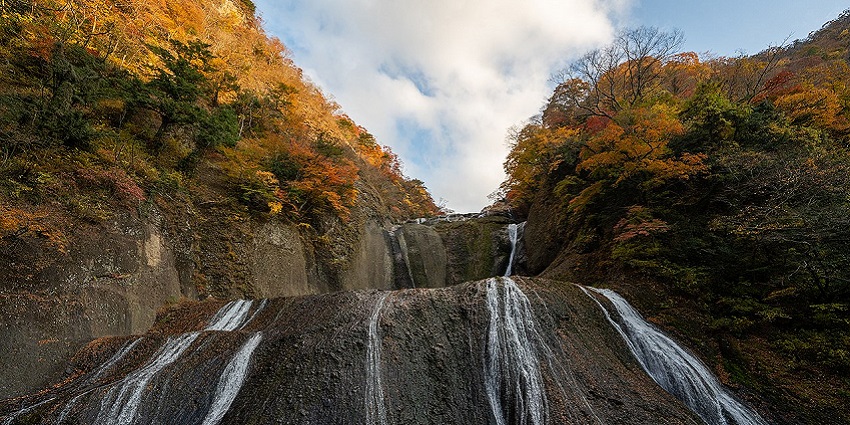
Photo: Raita Futo / Wikimedia Commons
Fukuroda Falls is the most popular waterfall in Japan. Located in Ibaraki Prefecture, this waterfall is a wonderful spectacle. This four-storey waterfall plummets down a rocky hillside, with different images covered by changing seasons each time. Spring and summer experience lush greenery amidst the falling water, while autumn exhibits its blazing hues of red and gold. Winter transforms it into a frozen spectacle. It is easily reachable from Tokyo by taking a train and a bus; the falls are situated in Daigo Town and have a well-established observation platform and a tunnel that carries visitors close to the base.
Best Time To Visit: Winter for frozen falls, Autumn for foliage
Entry Fee: ¥300 (₹165)
Major Attractions: Tunnel viewing deck, suspension bridge, local soba restaurants
4. Shiraito Falls, Shizuoka

Photo: Alpsdake / Wikimedia Commons
Shiraito Falls is located at the foot of Mount Fuji in Shizuoka Prefecture and is a highly photogenic natural site, famous for its dainty charm. In contrast to other waterfalls that plunge in a single majestic trunk, Shiraito Falls cliff creates a curtain-like effect, giving the appearance of silk threads, which is also the meaning of the name Shiraito, which means “white threads”. A trail winds along an easy path with viewpoints, allowing you to enjoy the falls’ sights and sounds of the cascading water while experiencing a zen-like feeling.
Best Time To Visit: Spring and early summer
Major Attractions: Mt Fuji views, Otodome Falls nearby, Fuji Milk Land
5. Ryuzu Falls, Tochigi
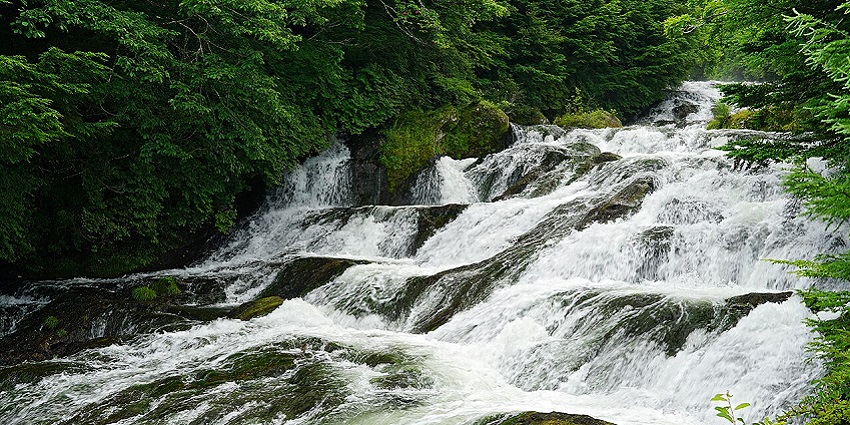
Photo: 663highland / Wikimedia Commons
Ryuzu Falls is one of the most scenic waterfalls in Japan, and it is located in Nikko National Park. The waterfall is split by a big rock in its centre. Ryuzu Falls is a wide, beautiful place full of verdant greenery and bright maple trees. It becomes a must-visit destination in autumn when the fiery red and orange hues frame the rushing waters. A viewing platform near the base joins a teahouse where you can enjoy matcha sipping with the view. The flow of Ryuzu Falls enables a peaceful entrance into the works of nature.
Best Time To Visit: September to October
Major Attractions: Hiking trails, tea houses with waterfall views
6. Nunobiki Falls, Hyogo
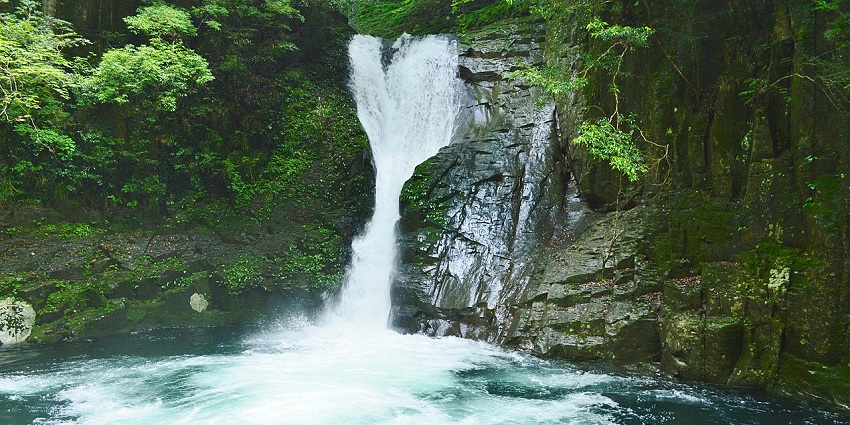
Photo: Saigen Jiro / Wikimedia Commons
Nunobiki Falls is one of the most accessible yet mesmerising waterfalls in Japan. With four cascades, Ontaki, Mentaki, Meotodaki, and Tsutsumigadaki, this natural beauty comes alive with eye-pleasing beauty, but also a rich history. In addition, it includes a hiking trail that weaves through a lush forest, offering multiple viewpoints and a tranquil escape from the city. Nunobiki Falls are endowed with an illustrious culture coupled with the beauty of nature.
Best Time To Visit: Year-round
Major Attractions: Herb gardens, panoramic Kobe views, ropeway
7. Amedaki Falls, Tottori
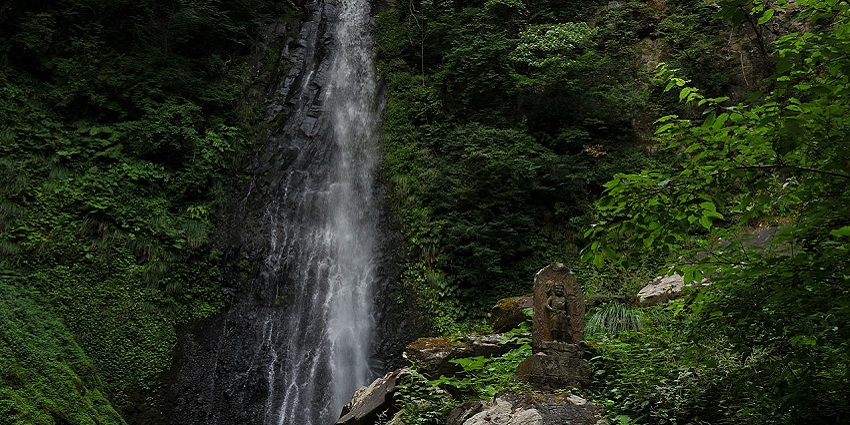
Photo: Reggaeman / Wikimedia Commons
The Amedaki Falls, tucked amid the tranquil surroundings of Tottori Prefecture, are a beautiful place surrounded by greenery and volcanic rocks. The area is known for its peaceful environment, especially in autumn, when the flora is in its full bloom of colour. With forest-lined paths in the short distance, one can easily stroll down a trail that forks away from the waterfall and leads down to the base of the falls. The few legends surrounding the area add another mystery to the cultural glamour of the site.
Best Time To Visit: Spring and early summer
Major Attractions: Picnic spots, waterfalls trail, rustic bridges
8. Kanabiki Falls, Kyoto
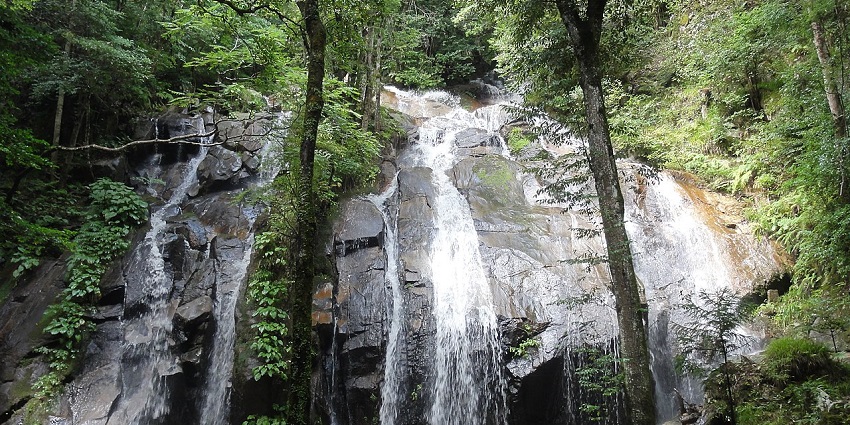
Photo: アラツク / Wikimedia Commons
Kanabiki Falls is among the most fascinating natural wonders ever seen, credited with its powerful flow and peaceful atmosphere. This magnificent waterfall is surrounded by lush nature, and especially in autumn, the colour of the foliage is very bright. The word “kanabiki” means “to saw” and refers to the shape and force with which the water falls, giving it the semblance of a carpenter’s saw. The beautiful falls are part of a serene forest trail leading to other nearby shrines and views. It is a peaceful place outside of the busy streets of Kyoto, a refreshing nature close without any sounds.
Best Time To Visit: June to July (rainy season)
Major Attractions: Forest trails, quiet setting, meditation spots
9. Nabegataki Falls, Kumamoto
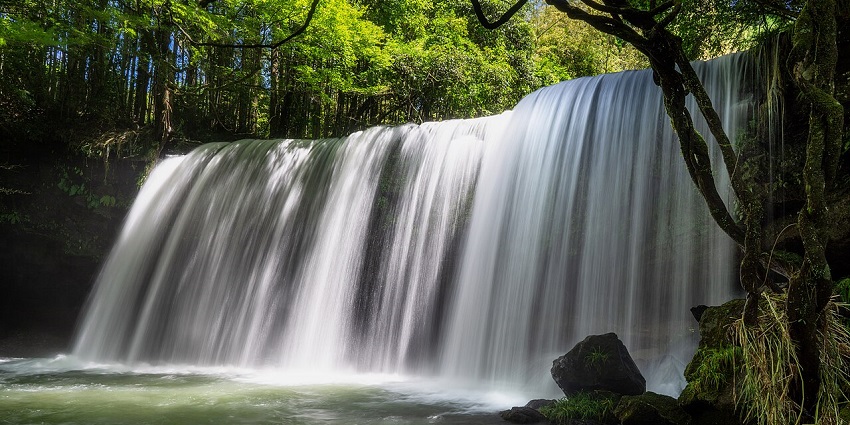
Photo: Big Ben in Japan / Wikimedia Commons
Nabegataki Falls is one of the most unique waterfalls in Japan. It has a curtain-like water flow and a hidden cave behind the cascade. It is one of the few waterfalls in the world that allows you to walk behind and into the mountain, so surreal that it’s almost cinematic. The soft, misty spray and the emerald green surrounding areas give that perennial quiet. Short and well-maintained, the trail leads from the parking area directly to the falls. Early spring and autumn are especially mesmerising at Nabegataki as colours from the foliage light up the scenery.
Best Time To Visit: April to July
Entry Fee: ¥300 (₹165)
Major Attractions: Walk-behind path, forest area, nearby onsens
10. Fudo Falls, Fukushima
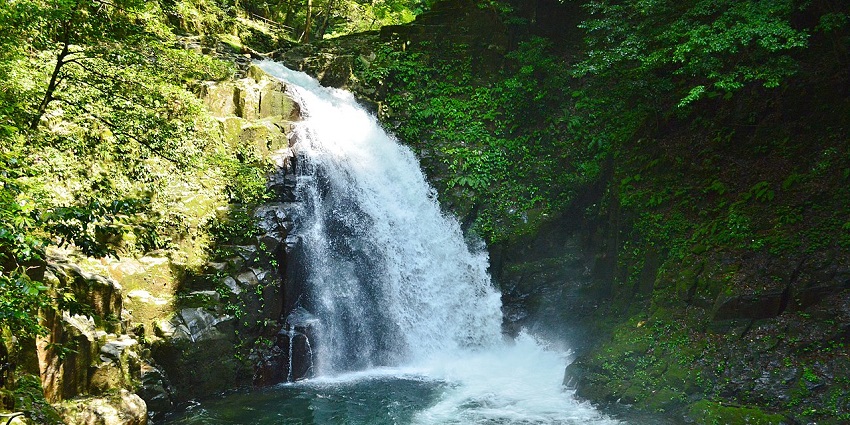
Photo: Saigen Jiro / Wikimedia Commons
Fudo Falls in Fukushima plunge into the lush forest of the Bandai-Asahi National Park. Named after Fudo Myo-o, the Buddhist deity who is the guardian of waterfalls, the site has a spiritual significance and is visited by monks and nature lovers alike. The falls are surrounded by mossy rocks and ancient trees that add to the ambience and the serenity that makes this place an ideal hideout from city chaos. Easily accessible via a short hiking trail, Fudo Falls offers a visual treat with a refreshing hideaway for meditation and spiritual worship in the heart of Fukushima.
Best Time To Visit: Summer for full flow
Major Attractions: Goshikinuma ponds, wildflower trails, birdwatching
From well-known waterfalls such as Nachi Falls to peaceful hidden gems along woodland trails, waterfalls in Japan are more than the country’s natural beauty, they represent a timeless and deep-rooted relationship with nature. Book with TripXL and ensure that your exploration is made smooth and memorable as you indulge in Japan’s greatest waterfalls and let go of your stress.
Cover Photo: Daderot / Wikimedia Commons


 WhatsApp
WhatsApp
 Twitter
Twitter









